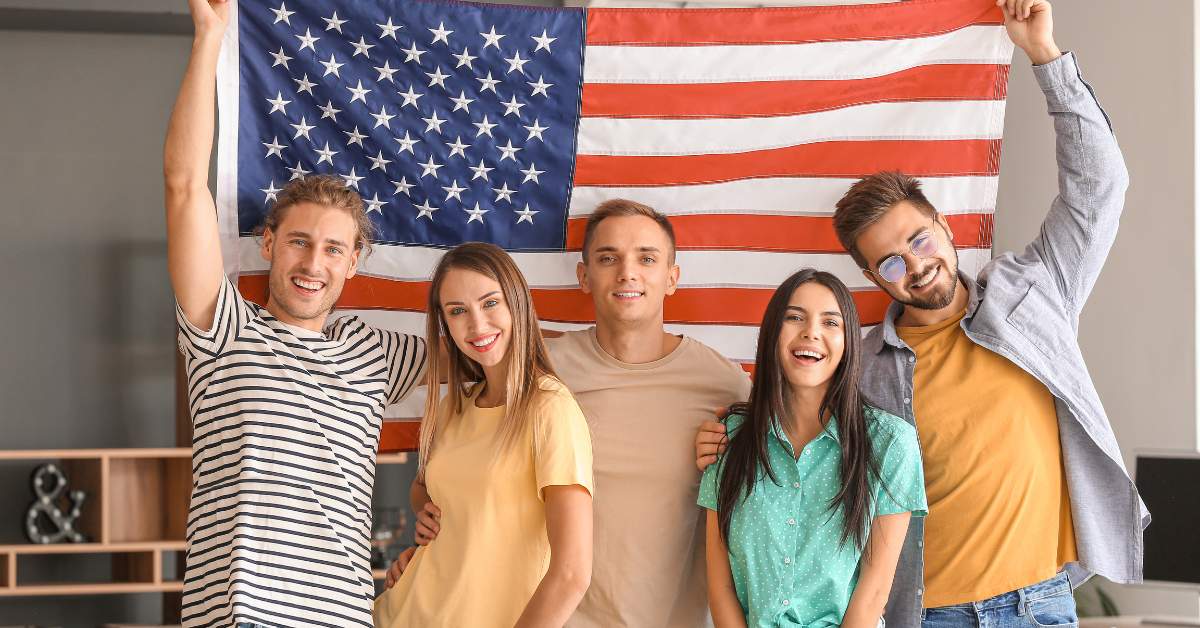The image Japanese people hold of Americans is often a mixture of admiration and criticism. On one hand, they are seen as cheerful, sociable, and free, but on the other hand, they may be described as overly assertive or careless. These impressions are influenced by media, education, and cultural differences, which continue to shape the way Japanese society perceives Americans today.
Representative Images of Americans Seen by Japanese
One of the first impressions Japanese people often have of Americans is that they are “cheerful and friendly.” Americans are perceived as approachable because they easily strike up conversations with strangers and smile frequently. In Japan, it is customary to maintain distance when meeting someone for the first time, so such openness can be both welcoming and surprising.
Another strong impression is “assertiveness.” In meetings and discussions, Americans tend to express their opinions clearly and support them with logical reasoning. To Japanese, this behavior can appear as “confidence and leadership” but also as “forcefulness and disregard for harmony.”
Moreover, American culture values freedom and individuality, encouraging people to choose their own lifestyle and beliefs. For Japanese observers, this often represents independence and self-reliance, though it can also be interpreted as self-centeredness. In terms of physical appearance, Americans are often imagined as “large in build” and as consuming “large portions of food,” impressions reinforced by media portrayals.
Positive and Negative Images Compared
The same traits are often judged as both strengths and weaknesses.
| Category | Positive Image | Negative Image |
|---|---|---|
| Personality | Cheerful, friendly, optimistic | Self-centered, forceful |
| Culture | Free, adventurous, accepting of diversity | Careless, different manners |
| Appearance | Strong build, healthy | Overweight, flashy |
| Communication | Expressive, logical | Insensitive to atmosphere, pushy |
This duality shows that perceptions depend heavily on context and perspective.
Background of These Impressions
The Japanese image of Americans is shaped not only by personal interactions but also by media, education, and cultural differences.
| Factor | Content | Japanese Perception |
|---|---|---|
| Movies & TV | Heroes, free-spirited characters | Americans as free and powerful |
| News | Gun culture, obesity issues | Americans as dangerous or unhealthy |
| Education | English lessons, study abroad | Open and approachable |
| Cultural values | Individualism vs collectivism | Contrasting worldviews |
As shown above, different sources of information create mixed impressions that coexist in Japanese society.
Impressions in Business Situations
In business, Japanese perceptions of Americans become especially pronounced.
| Aspect | American Traits | Japanese View |
|---|---|---|
| Meetings | Active participation, quick decisions | Efficient but lacking consideration |
| Contracts | Heavy reliance on documentation, short-term results | Practical but lacking trust-building |
| Evaluation | Clear focus on individual achievements | Fair but overly competitive |
| Work style | Emphasis on work-life balance | Flexible but unstable |
These differences can cause misunderstandings and friction, yet they also provide opportunities for mutual learning and collaboration.
Different Perceptions Between Students and Professionals
The image of Americans varies by generation and social role.
| Perspective | Students’ View | Professionals’ View |
|---|---|---|
| Information source | Movies, social media | Real business and cross-cultural interaction |
| Impression | Cool, free, admirable | Logical, strong negotiators |
| Emotional stance | Admiration, idealization | Respect mixed with caution |
| Positioning | Object of aspiration | Partner and competitor |
Students tend to idealize Americans as symbols of freedom, while professionals recognize both strengths and challenges in working with them.
Historical Background and Cultural Influence
Since World War II, American culture has exerted tremendous influence on Japan. Movies, music, and fashion introduced a new lifestyle model for Japanese society.
| Era | Japanese Impression of Americans | Background |
|---|---|---|
| Postwar | Strong, symbol of prosperity | U.S. occupation influence |
| High-growth period | Free, efficient, aspirational | Spread of movies and music |
| Bubble era | Glamorous, affluent lifestyle | Expansion of consumer culture |
| Modern day | Diverse, realistic presence | Globalization and information flow |
This timeline shows how perceptions of Americans have shifted with historical context.
Conclusion
The image of Americans in Japan combines both positive impressions—cheerful, friendly, free—and negative impressions—self-centered, careless. These views are shaped by media, education, history, and cultural contrasts, and they differ depending on generation and social role.
The key is not to accept these images as rigid stereotypes, but to approach them with understanding of cultural background and values. By doing so, differences can be seen not as barriers but as opportunities for learning and deeper mutual understanding.






